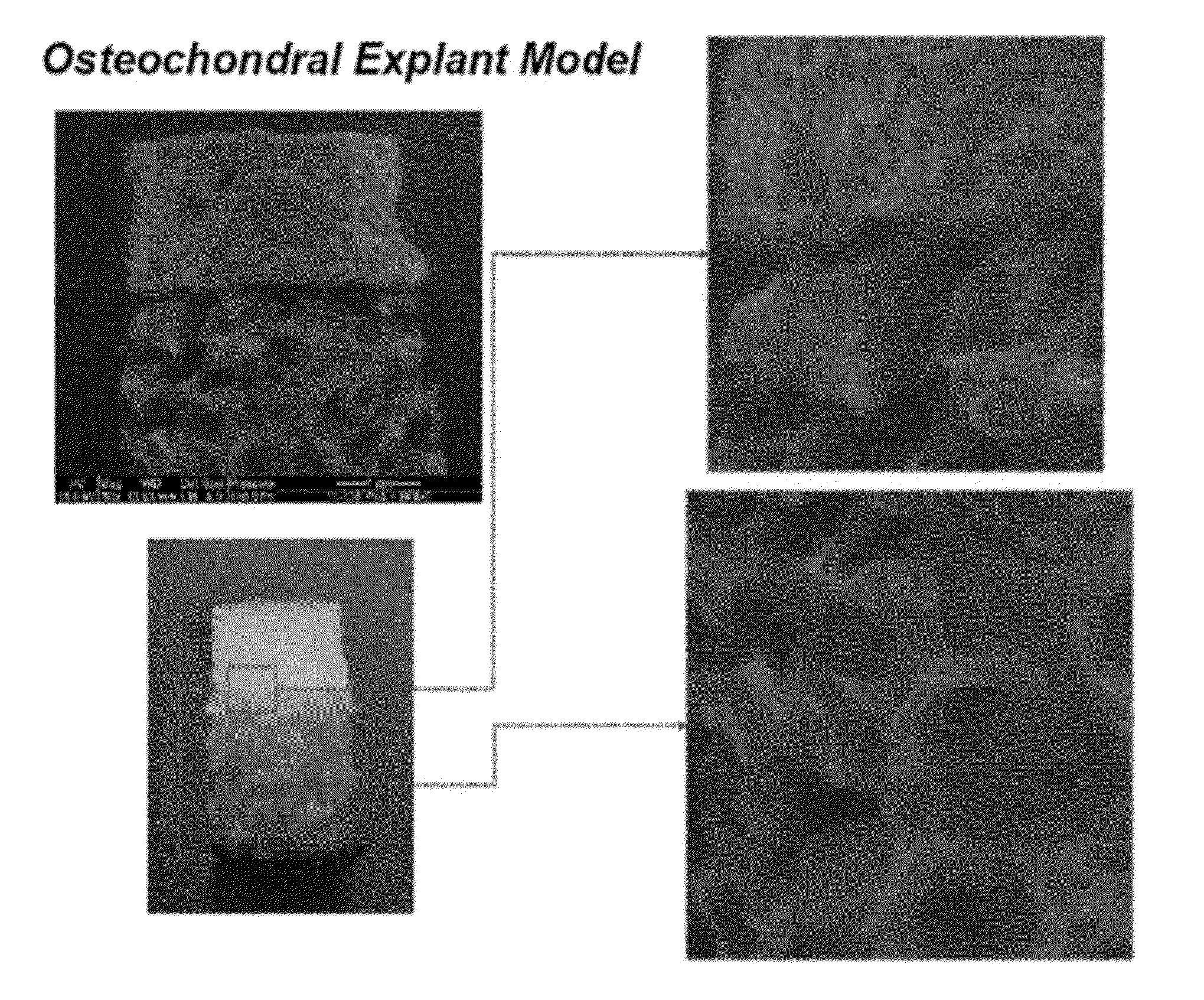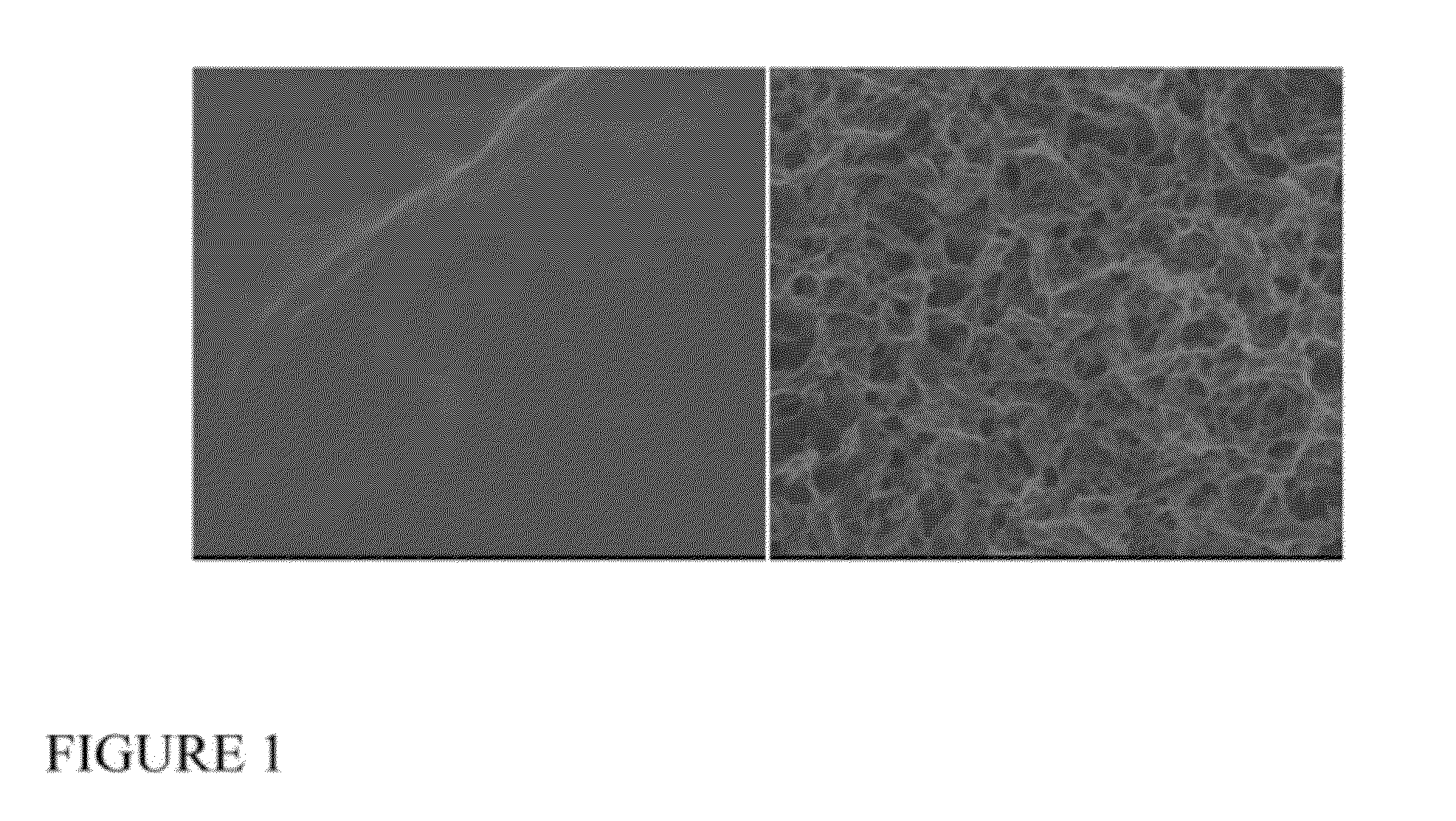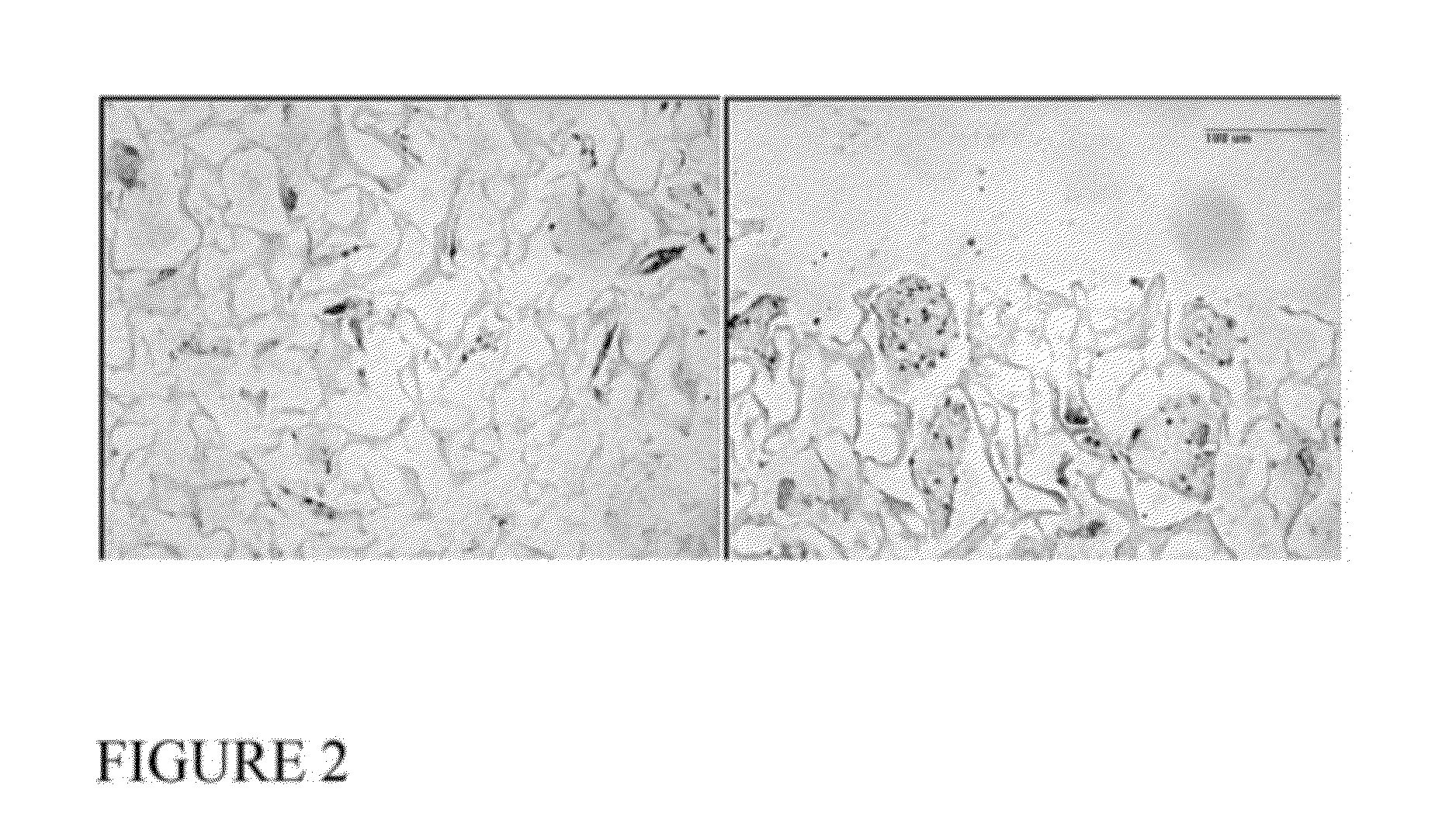Interconnected porous non-degradable poly(VINYL) alcohol implant and method of manufacture
a non-degradable polyvinyl alcohol and interconnected technology, applied in the field of manufacturing porous non-degradable polyvinyl alcohol implants, can solve the problems of inability to perform joint replacement in younger patient populations, and inability to prevent the progression of osteoarthritis
- Summary
- Abstract
- Description
- Claims
- Application Information
AI Technical Summary
Benefits of technology
Problems solved by technology
Method used
Image
Examples
example 1
Manufacture of the Interconnected PVA Implant
[0137]Materials and Methods
[0138]All handling and fabrication techniques were performed aseptically to minimize contamination with bacteria and other infectious agents. The method of manufacture involves four steps:
[0139]a. Hydration of gelatin sponges,
[0140]b. Replacement of water with poly(vinyl) alcohol solutions,
[0141]c. Freeze-thawing of construct, and
[0142]d. Removal of gelatin sponge to form macroporous network.
[0143]Hydration of gelatin sponges: Gelatin (denatured collagen) sponges (Ethicon-Johnson & Johnson, Somerville, N.J.) were first soaked in deionized water until the entire sponge was saturated with water via capillary action and under applied vacuum (30 minutes on / off for 6 hours) for 1 day. The sponges were transferred to 50 mL conical tubes and repeatedly centrifuged at 3000 g for 1 hour at a time, with gentle agitation of the tube between centrifugations to restore its original shape, until all remaining air bubbles had ...
example 2
Control of the Mechanical Properties of the Implant for a Given Morphology
[0151]Materials and Methods
[0152]10% and 20% PVA scaffolds were manufactured using the materials and methods described in Example 1.
[0153]Cylindrical scaffolds (Ø5×2-3.5 mm) were cored out for mechanical testing (n=5 per group). Samples were first tested in unconfined compression in a phosphate buffered saline bath. Initial contact with the specimen surface was determined when an instantaneous applied load reading of 0.2-0.5 g was measured and the initial specimen height was determined at this point. Then applied strain (displacement / original height) compressions were applied in 5% increments to a maximum of 25% strain, with the sample being allowed to equilibrate after each step for 10-15 minutes. After each test, the samples were unloaded and allowed to recover to their original height in a saline bath. Samples were then retested in confined compression loading configuration.
[0154]The loads were converted to...
example 3
Implants can Support Cell Survival and Proliferation
[0158]Materials and Methods
[0159]PVA scaffolds (Ø5.0×2.5 mm) prepared as described in Example 1 were rehydrated in 400 μL of Dulbecco's Modified Eagle Medium (DMEM) containing 20×106 chondrocytes / mL in a 24-well plate. After this initial rehydration, scaffolds were covered with an addition 2 mL of cell suspension and incubated at 37° C. with 5% CO2 for 30 minutes. Afterwards, the media was changed with fresh DMEM with 5% fetal bovine serum and antibiotics. After 48 hours, cell-seeded scaffolds were placed in a custom loading bioreactor and loaded in unconfined compression from 0→1 N at 0.5 Hz for 5 minutes at 25° C. Free-swelling (unloaded) controls were maintained adjacent to the bioreactor during loading. After loading, all samples were cultured for an additional 48 hours in DMEM with 10 μM bromodeoxyuridine (BrdU) and then washed for 2 hours in fresh media, fixed in 10% formalin, embedded in paraffin wax, sectioned, and then ass...
PUM
| Property | Measurement | Unit |
|---|---|---|
| pore diameter | aaaaa | aaaaa |
| pore diameter | aaaaa | aaaaa |
| pore diameter | aaaaa | aaaaa |
Abstract
Description
Claims
Application Information
 Login to View More
Login to View More - R&D
- Intellectual Property
- Life Sciences
- Materials
- Tech Scout
- Unparalleled Data Quality
- Higher Quality Content
- 60% Fewer Hallucinations
Browse by: Latest US Patents, China's latest patents, Technical Efficacy Thesaurus, Application Domain, Technology Topic, Popular Technical Reports.
© 2025 PatSnap. All rights reserved.Legal|Privacy policy|Modern Slavery Act Transparency Statement|Sitemap|About US| Contact US: help@patsnap.com



